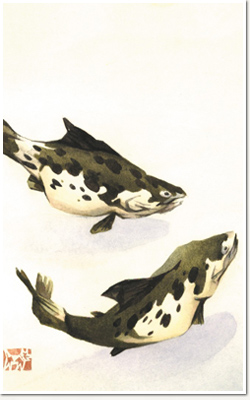 Do I need permission to teach The Artist’s Way?
Do I need permission to teach The Artist’s Way?
No. Anyone can teach the course or begin a cluster by following the book and the guidelines below. It is my belief that creative recovery at its best is a nonhierarchical, peer-run, collective process.
There are no “accredited” Artist’s Way teachers. Avoid anyone who offers to “certify” you as a teacher-- there is no such thing.
Guidelines
- Use a Twelve-Week Process with a Weekly Gathering of Two to Three Hours. The morning pages and artist dates are required of everyone in the group, including facilitators. The exercises are done in order in the group, with everyone, including the facilitator, answering the questions and then sharing the answers in clusters of four, one chapter per week. Do not share your morning pages with the group or anyone else. Do not reread your morning pages until later in the course, if you are required to do so by your facilitator or your own inner guidance.
- Avoid Self-Appointed Gurus. If there is any emissary, it is the work itself, as a collective composed of all who take the course, at home or otherwise. Each person is equally a part of the collective, no one more than another. While there may be"teachers," facilitators who are relied on during the twelve-week period to guide others down the path, such facilitators need to be prepared to share their own material and take their own creative risks. This is a dialectic rather than a monologue – an egalitarian group process rather than a hierarchical one.
- Listen. We each get what we need from the group process by sharing our own material and by listening to others. We do not need to comment on another person's sharing in order to help that person. We must refrain from trying to"fix" someone else. Each group devises a cooperative creative "song" of artistic recovery. Each group's song is unique to that group – like that of a pod or family of whales, initiating and echoing to establish their position. When listening, go around the circle without commenting unduly on what is heard. The circle, as a shape, is very important. We are intended to witness, not control, one another. When sharing exercises, clusters of four within the larger groups are important: five tends to become unwieldy in terms of time constraints; three doesn't allow for enough contrasting experience. Obviously, not all groups can be divided into equal fours. Just try to do so whenever you can.
- Respect One Another. Be certain that respect and compassion are afforded equally to every member. Each person must be able to speak his own wounds and dreams. No one is to be"fixed" by another member of the group. This is a deep and powerful internal process. There is no one right way to do this. Love is important. Be kind to yourself. Be kind to one another.
- Expect Change in the Group Makeup. Many people will – some will not – fulfill the twelve-week process. There is often a rebellious or fallow period after the twelve weeks, with people returning to the disciplines later. When they do, they continue to find the process unfolding within them a year, a few years, or many years later. Many groups have a tendency to drive apart at eight to ten weeks (creative U-turns) because of the feelings of loss associated with the group's ending. Face the truth as a group; it may help you stay together.
- Be Autonomous. You cannot control your own process, let alone anyone else's. Know that you will feel rebellious occasionally – that you won't want to do all of your morning pages and exercises at times in the twelve weeks. Relapse is okay. You cannot do this process perfectly, so relax, be kind to yourself, and hold on to your hat. Even when you feel nothing is happening, you will be changing at great velocity. This change is a deepening into your own intuition, your own creative self. The structure of the course is about safely getting across the bridge into new realms of creative spiritual awareness.
- Be Self-Loving. If the facilitator feels somehow "wrong" to you, change clusters or start your own. Continually seek your own inner guidance rather than outer guidance. You are seeking to form an artist-to-artist relationship with the Great Creator. Keep gurus at bay. You have your own answers within you.
The Artist’sWay and all my other “teaching” books are the distillate of forty years of artistic practice. They are experiential books intended to teach people to process and transform life through acts of creativity. All books and all creative clusters should be practiced through creative action, not through theory.
It is my belief and my experience as a teacher that all of us are healthy enough to practice creativity. It is not a dangerous endeavor requiring trained facilitators. It is our human birthright and something we can do gently and collectively. Creativity is like breathing – pointers may help, but we do the process ourselves. Creative clusters, where we gather as peers to develop our strength, are best regarded as tribal gatherings, where creative beings raise, celebrate, and actualize the creative power which runs through us all.

